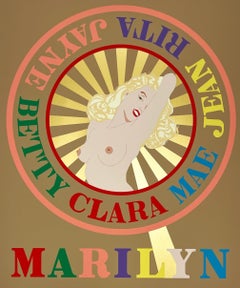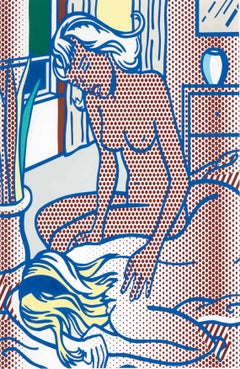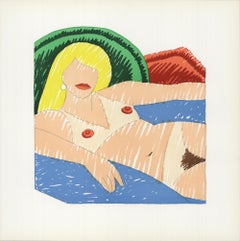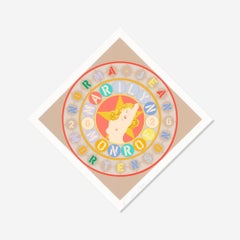Robert Indiana Nude Prints
Robert Indiana's work evolved into hard-edged graphic images of words, logos and typographic forms, earning him a reputation as one of the country's leading contemporary artists.
Indiana is known for using public signs and symbols with altered lettering to make stark and challenging visual statements. In his prints, paintings and constructions, he gave new meaning to basic words like Eat, Die and Love. Using them in bold block letters in vivid colors, he enticed his viewers to look at the commonplace from a new perspective. One indication of his success was the appearance of his immensely popular multi-colored Love on a United States postage stamp in 1973.
Find a collection of original Robert Indiana art today on 1stDibs.
Early 2000s Robert Indiana Nude Prints
Screen
1990s Pop Art Robert Indiana Nude Prints
Screen
1990s Pop Art Robert Indiana Nude Prints
Screen
1970s Pop Art Robert Indiana Nude Prints
Screen
20th Century Pop Art Robert Indiana Nude Prints
Offset
21st Century and Contemporary Pop Art Robert Indiana Nude Prints
Cotton Canvas, Canvas
Early 2000s Pop Art Robert Indiana Nude Prints
Screen
1970s Pop Art Robert Indiana Nude Prints
Ink, Screen
1990s Pop Art Robert Indiana Nude Prints
Lithograph, Offset
1980s Pop Art Robert Indiana Nude Prints
Offset
1980s 85 New Wave Robert Indiana Nude Prints
Offset
Mid-20th Century Cubist Robert Indiana Nude Prints
Screen
1980s Pop Art Robert Indiana Nude Prints
Etching, Aquatint
1980s Pop Art Robert Indiana Nude Prints
Offset
1990s Pop Art Robert Indiana Nude Prints
Screen
1990s Robert Indiana Nude Prints
Screen
Robert Indiana nude prints for sale on 1stDibs.
Artists Similar to Robert Indiana
- What did Robert Indiana do?1 Answer1stDibs ExpertMarch 22, 2022Robert Indiana produced Pop art. He became well known for incorporating public signs and symbols into his prints, paintings and collages. In 1973, one of his “Love” compositions appeared on a U.S. postage stamp. You'll find a wide range of Robert Indiana art on 1stDibs.
- When was Robert Indiana born?1 Answer1stDibs ExpertFebruary 1, 2024Robert Indiana was born on September 13, 1928, in New Castle, Indiana. By the 1960s, he was an active artist, contributing to the development of Pop art, assemblage art and hard-edge painting movements. He is perhaps best known for his Love image, which he created in 1966 and has been reproduced many times in many formats, from U.S. postage stamps to statues. Shop a selection of Robert Indiana artwork on 1stDibs.
- 1stDibs ExpertApril 5, 2022Versions of Robert Indiana's Love sculpture are in more than 50 cities worldwide. One of the most well-known examples is in John F. Kennedy Plaza in Philadelphia, Pennsylvania. Locals refer to the area as LOVE Park in honor of the artwork. You'll find a variety of Robert Indiana art on 1stDibs.
- 1stDibs ExpertApril 5, 2024Here are a few facts about Robert Indiana's artwork. His body of work helped to define various techniques and movements, including assemblage art, Pop art and hard-edge painting.
In 1964, he created his now iconic LOVE image, including it on cards he sent to loved ones. He later turned the image into sculptures, and today, there are more than 50 of his LOVE pieces located in public spaces around the world.
Indiana was also an accomplished printmaker and is known for a series he produced in collaboration with poet Robert Creeley. As a graphic designer, he created posters for art exhibitions and theatrical performances, such as the New York State Theater, Lincoln Center and the opening exhibition of the Hirshhorn Museum of Art. In addition, he designed costumes and sets for Virgil Thomson and Gertrude Stein's opera, The Mother of Us All.
Shop a selection of Robert Indiana art on 1stDibs. - 1stDibs ExpertApril 5, 2022Robert Indiana created 50 editions of the iconic LOVE sculpture, some featuring a different word or the letters of a different language, but in the same distinguishable style. They have been on display all over the world. Find an array of authentic Robert Indiana pieces on 1stDibs.



